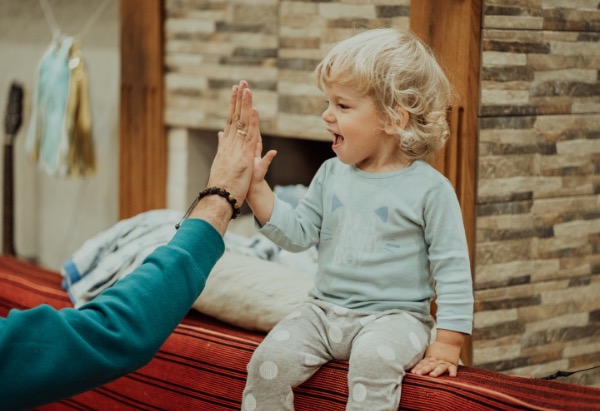At 13 months your baby is now officially a toddler, but of course they’re still your baby! As they grow and develop, you’ll notice their cognitive abilities evolve rapidly. Their language and cognitive skills work hand in hand to lay the groundwork for more complex thinking and problem-solving skills.
Use of objects and Imitation
Around this age, toddlers begin to use everyday objects for their intended purposes. They might drink from a cup or pretend to talk on a phone. This marks a critical stage in their understanding of how things work in their environment. By engaging with objects functionally, children begin to build connections between actions and their outcomes.
Toddlers are keen observers and often mimic the actions of adults. For instance, after seeing a parent on a phone call, a toddler may hold a toy phone to their ear and simulate a conversation, like in this activity. This imitation not only shows their understanding of the object’s use but also reflects their developing social awareness and desire to connect with those around them. Along the same lines, your little one might show they know how to use personal hygiene items like a toothbrush and hairbrush.
Towards 15 months, you might notice this imitation reach a new level and see your baby imitate more complex actions that involve multiple steps. For example, instead of just imitating talking on the phone, they’ll add one previous step which is to pull the phone out of a “purse”. This goes to show they can remember sequences of actions, indicating growing memory skills and an understanding of how to perform tasks that go beyond simple one-step actions. You can also try this fun painting activity that has specific instructions to work!
Imitating Peers
Another beautiful scene you may encounter in these months is seeing your child imitate what friends or peers their age do. If you have a playdate or you happen to catch an interaction at the park, you might see your little one banging on the slide just like the toddler was doing! You and your child will find joy in these new social encounters, not to mention they’re vital for social development, as it encourages cooperation, sharing, and understanding social cues.
Language to make sense of the world
Your child’s cognitive development will overlap with their language development. You will notice your little one following simple one-step instructions like “pick up the toy” or “stand up, please”. When they follow what you say, they are showing language comprehension and the ability to respond with their body. Your baby can now also move a body part when asked, like “give me your hand” or “arms up!”.
Your baby might also show that they can identify animals by their sound. This ability not only showcases their growing vocabulary but also their capacity for categorization and understanding of the world around them. Recognizing and mimicking animal sounds is a fun way for toddlers to engage with their environment and learn through play.
Music and orientation
Your toddler can now move around their house with a clear notion of where they are, meaning they have a sense of location in familiar places. You can even put this to the test with their newly acquired language comprehension skills! You can try this: Ask your toddler to bring your purse from your bedroom, or to go look for the ball in the kitchen. At first they might get a bit confused with the instructions but soon enough they’ll bring what you asked for from the correct location!
And last but not least, your toddler is now a musical loving being. They will clap or tap an instrument (somewhat) to the rhythm of a song. This will be even more visible if you do it with them to encourage imitation during musical exploration! Don’t miss out on this great idea of dancing with scarves.
List of milestones for 13-15 months
- Mimics hand gestures, such as clapping, waving, and pointing.
- Uses two to three everyday objects for their intended use Uses an object properly after observing an adult.
- Imitates actions that they have seen adults do involving more than one step.
- Knows how to use personal hygiene objects.
- Imitates what friends do in play, such as building towers when they do.
- Has a sense of location in familiar places (for example, knows where their parent’s room is).
- Identifies animals by their sound.
- Moves a body part when asked to.
- Follows simple, one-step instructions (like ‘Pick up the toy’).
- Claps or taps an instrument to the rhythm of a song.








